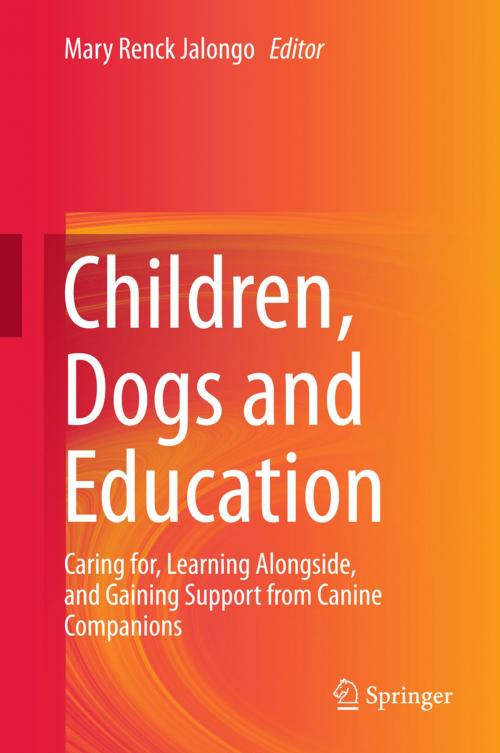Children, Dogs and Education
Caring for, Learning Alongside, and Gaining Support from Canine Companions
Nonfiction, Reference & Language, Education & Teaching, Preschool & Kindergarten, Educational Theory, Educational Psychology| Author: | ISBN: | 9783319778457 | |
| Publisher: | Springer International Publishing | Publication: | May 8, 2018 |
| Imprint: | Springer | Language: | English |
| Author: | |
| ISBN: | 9783319778457 |
| Publisher: | Springer International Publishing |
| Publication: | May 8, 2018 |
| Imprint: | Springer |
| Language: | English |
This book brings together authoritative information about the child/dog bond as it is manifested with family dogs, visiting therapy dogs, and service dogs trained to assist children with disabilities. Despite the widely accepted view that participating in a dog’s care and interacting with dogs in behaviorally healthy ways is a route to becoming responsible and compassionate, research on this complex dynamic is difficult to design, time-consuming to collect, and challenging to analyze. This volume synthesizes theory, research, and practice, bringing all to bear upon child/dog interactions in homes, schools, libraries, and the community at large. Children, Dogs and Education serves as a handbook for a diverse group of adults who seek to build positive relationships between children and dogs—parents/families, professional dog trainers, teachers, librarians, mental health professionals, health care professionals, and university faculty.
The study of interactions between human and nonhuman animals has captured the imagination of an international community of researchers from many different fields and professions. Even though dogs are ubiquitous in the lives of most children, studies of children’s interactions with dogs in families and communities are lacking. Most of the previous research on the human-canine bond has focused on adolescents and adults or, even when younger children are the focus, it has tended to rely on parents to speak for children. There are three features of this book that make it unique. First, it goes beyond exploring the child/dog bond to examine additional important issues, including: children’s concepts of responsible care, their ability to interpret dogs’ behavioral cues, and their ideas about canine behavioral issues/training. Second, unlike most other work to date, it represents children’s voices through cases, interviews, and drawings. Finally, the contributors to this edited work use their collective wisdom to draw educational implications and suggest direction in preparing the next generation of dog guardians.
This book brings together authoritative information about the child/dog bond as it is manifested with family dogs, visiting therapy dogs, and service dogs trained to assist children with disabilities. Despite the widely accepted view that participating in a dog’s care and interacting with dogs in behaviorally healthy ways is a route to becoming responsible and compassionate, research on this complex dynamic is difficult to design, time-consuming to collect, and challenging to analyze. This volume synthesizes theory, research, and practice, bringing all to bear upon child/dog interactions in homes, schools, libraries, and the community at large. Children, Dogs and Education serves as a handbook for a diverse group of adults who seek to build positive relationships between children and dogs—parents/families, professional dog trainers, teachers, librarians, mental health professionals, health care professionals, and university faculty.
The study of interactions between human and nonhuman animals has captured the imagination of an international community of researchers from many different fields and professions. Even though dogs are ubiquitous in the lives of most children, studies of children’s interactions with dogs in families and communities are lacking. Most of the previous research on the human-canine bond has focused on adolescents and adults or, even when younger children are the focus, it has tended to rely on parents to speak for children. There are three features of this book that make it unique. First, it goes beyond exploring the child/dog bond to examine additional important issues, including: children’s concepts of responsible care, their ability to interpret dogs’ behavioral cues, and their ideas about canine behavioral issues/training. Second, unlike most other work to date, it represents children’s voices through cases, interviews, and drawings. Finally, the contributors to this edited work use their collective wisdom to draw educational implications and suggest direction in preparing the next generation of dog guardians.















